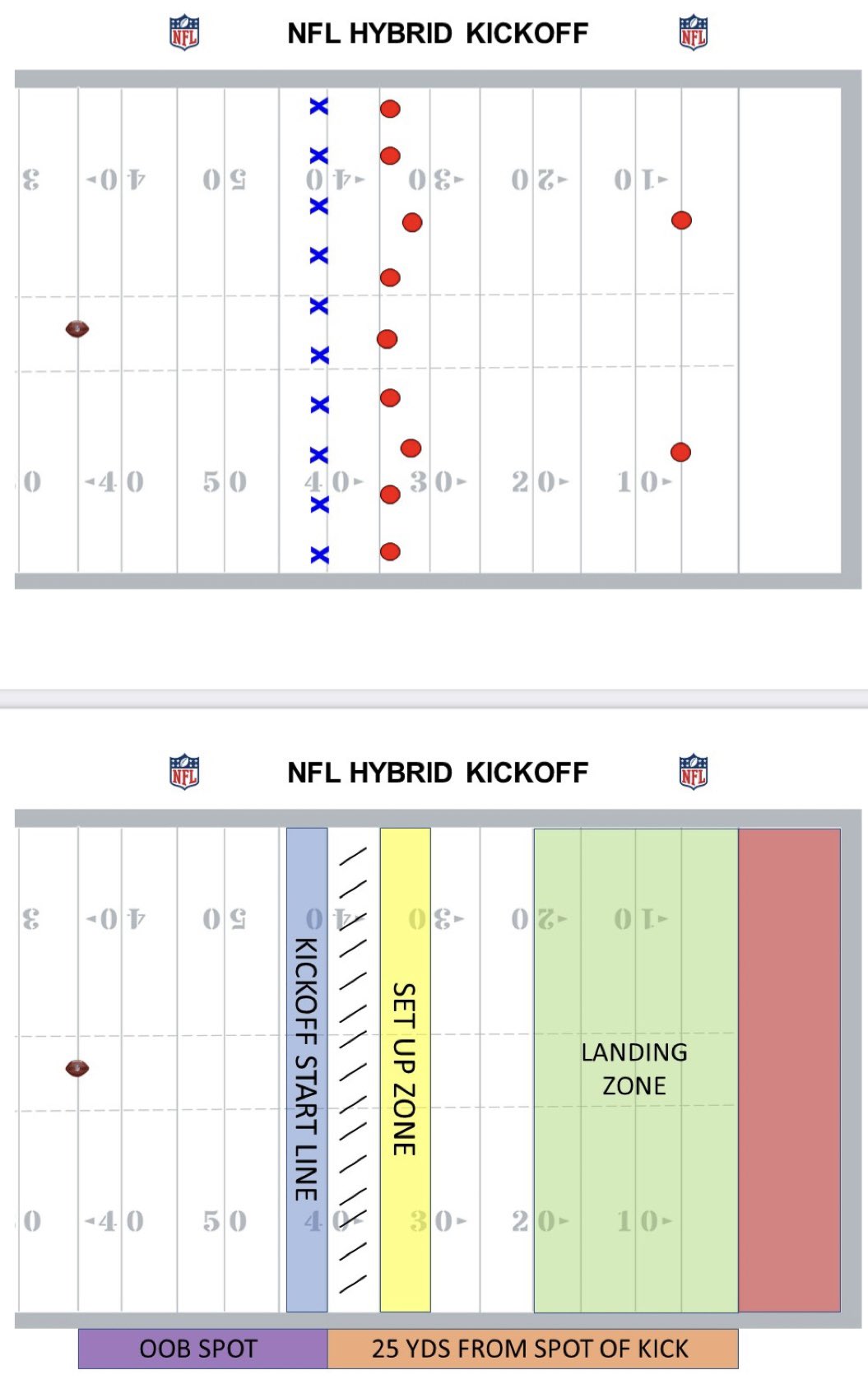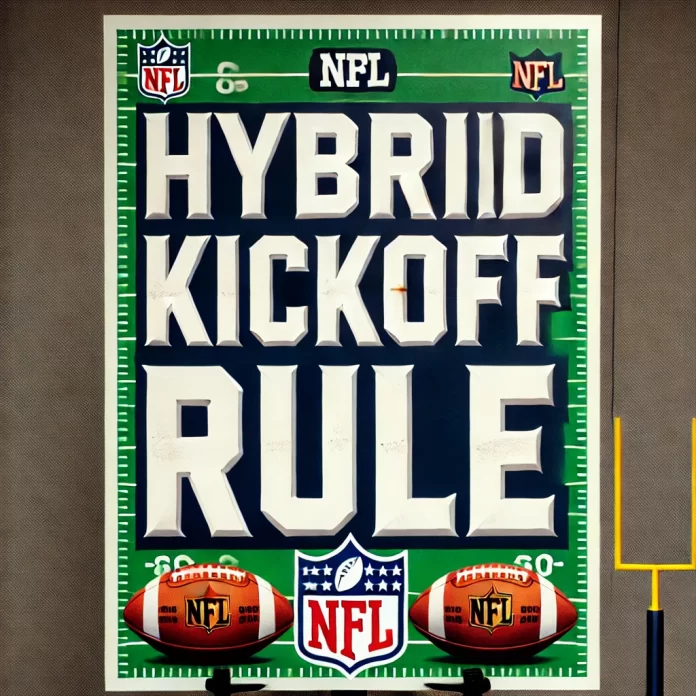The NFL has added a new kickoff rule starting in the 2024 season, with the possibility of it continuing into 2025.
This “hybrid kickoff” rule is designed to reduce high-speed collisions and increase the number of returns while maintaining player safety.
Check out our NFL expert picks this season to keep up with the latest bets.
The Hybrid Kickoff Rule
Here are the key changes:
1. Player Alignment: The 10 non-kicking players on the kicking team must now line up at the opponent’s 40-yard line, while the receiving team must have at least seven players within a designated 5-yard zone between their 30- and 35-yard lines.
The receiving team can have one or two returners stationed between the 20-yard line and the goal line.
2. Movement Restrictions: Players on both teams (except the returner) are not allowed to move until the ball hits the ground, a returner catches it, or it crosses into the end zone.
This rule aims to prevent players from building up too much speed before a collision occurs, thus reducing injury risks.
3. Touchbacks and Penalties: A kick that goes into the end zone and is downed now results in the ball being placed at the receiving team’s 35-yard line, a shift from the previous 25-yard line.
Kicks that do not reach the “landing zone” (20-yard line or further) are treated like a kickoff out of bounds, giving the receiving team the ball at their own 40-yard line.
Here is the field setup shown in an image

Hybrid Kickoff Rule & Betting Totals
The new NFL kickoff rule could indeed lead to an increase in scoring for several reasons, driven by improved field position and more chances for dynamic returns.
All with the potential to boost NFL total points betting markets.
1. Better Field Position from Touchbacks: With the touchback now bringing the ball out to the 35-yard line (up from the previous 25-yard line), offenses will be starting their drives with an advantage.
This shift means teams are closer to field goal range right from the start, reducing the number of yards needed to score. Over time, this could lead to more points being scored, especially in tight games where field position plays a bigger role.
2. More Return Opportunities: The rule encourages more returns rather than simply having kicks sail through the end zone. Teams may be more inclined to attempt returns, and with improved blocking setups, there could be more opportunities for big plays.
A well-executed return could set up the offense with excellent field position, further contributing to increased scoring.
3. Shorter Fields = More Scoring: By starting drives closer to midfield, teams are likely to face shorter fields. This not only increases the likelihood of scoring touchdowns but also field goals.
Even if an offense stalls, the closer proximity to the opponent’s end zone will allow kickers to attempt field goals from shorter distances, boosting overall scoring.
4. Higher Frequency of Drives Ending in Points: With shorter fields and better starting positions, offenses will likely convert drives into points more frequently.
Whether through touchdowns or field goals, this boost in field position is expected to make it easier for teams to score, thereby increasing overall point totals in games.
This rule change should lead to higher scoring due to improved starting field position, more chances for impactful returns, and more frequent field goal attempts from manageable distances.
So what have we learned from this? – Bet the Overs early during the 2024 NFL season!
If you love a punt – check out some more of our NFL betting advice.







































